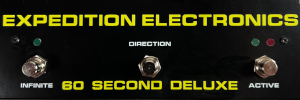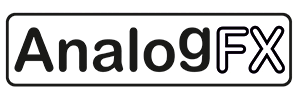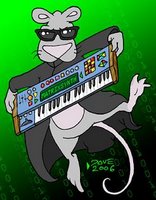
Showing posts sorted by relevance for query life in balance. Sort by date Show all posts
Showing posts sorted by relevance for query life in balance. Sort by date Show all posts
Thursday, December 11, 2008
Life In Balance - A fun little Jam
YouTube via bansuri
"Life In Balance from Pittsburgh, PA. Performing music for meditations and healing. Using Quartz Crystal Bowls, Japanese Shakuhachi Flutes, EWI 4000s, Korg M3, Moog Voyager, Hartmann Neuron and Korg Radias.
http://www.myspace.com/soundhealer
http://www.lifeinbalancemusic.com
We have been touring consistently since 1998 - from Anchorage to Key West, from the Delaware beaches to Denver and cities in between.
We are in heavy rotation on many radio shows and were featured in the Living Room Concert series on the National Public Radio program ECHOES. Our music has been aired on the syndicated radio show "Music From The Hearts of Space"
Life In Balance is a Pittsburgh-based nationally touring and recording duo committed to using sacred musical instruments merged with current technology to create an integrated sonic environment for transformation. We perform both Sound Healing Meditation (Inbreath) and Dance/Music Concerts using hypno-global rhythms (Outbreath).
We have personally grown and cultivated our audiences and venues through constant touring and meeting liked minded groups of people throughout the country. Our successes are measured in the connections that we make with the listeners as well as CD sales."
"For those in the Pittsburgh region, We're getting ready for our big Solstice party.
info below.
The Life In Balance - Winter Solstice 2008
Sunday, Dec. 21st: “OM FOR THE HOLIDAYS” Winter Solstice Show, @ Your Inner Vagabond, 4130 Butler Street. Pittsburgh (Lawrenceville) Doors open at 7 pm, show starts at 7:30 pm. $10 cover. BYOB. All ages. Call 412-683-1623 http://www.yourinnervagabond.com
The Second Annual Life In Balance “OM FOR THE HOLIDAYS” a Winter Solstice Celebration is on for Sunday, December 21st.
Join in for our annual Solstice Ritual as we all shine on, shining our light brightly into the longest night. Be a part of this ancient connection as we continue the time line that we call, “Om for the Holidays” at Your Inner Vagabond. Doors open at 7 pm, show starts at 7:30 pm. $10 cover. BYOB. All ages. Call 412-683-1623
The evening starts with a flowing ambient Life In Balance set followed by an audience participatory Solstice Space Ritual.
Life In Balance will be performing music of the spheres using quartz crystal singing bowls and electronic synthesizers giving a musical voice to the Dark and Light by developing a personal inner-rhythmic pulse that opens into an ecstatic dancing celebration. Joining LIB will be Jan Hamilton-Sota on violin.
Bring an open heart along with your open mind and let us share an experience that will continue to shine throughout the long Winter nights ahead.
Life In Balance
Websites:
http://www.lifeinbalancemusic.com
http://www.myspace.com/soundhealer
http://www.sonicbids.com/lifeinbalance"
Wednesday, July 25, 2007
Life In Balance
 Remember this post? Here are a few more shots from Life In Balance (and on MySpace).
Remember this post? Here are a few more shots from Life In Balance (and on MySpace).Juliana (art and light designer for Life In Balance) Try's her hand at the theremin at the Moog factory in Asheville.
 Ami with Quartz Crystal Singing Bowls - Moog Voyager and Theremin Pro - EML 101 - Korg midi controller and more
Ami with Quartz Crystal Singing Bowls - Moog Voyager and Theremin Pro - EML 101 - Korg midi controller and more
Steve on Jamming on his Voyager
Monday, November 17, 2008
Steve Scuilli - Hartmann Neuron Live
 "Musician Steve Sciulli will perform on the Hartmann Neuron - a very rare electronic synthesizer on Tuesday, Nov 18th at Your Inner Vagabond. This is part of "Electric Larryville" the monthly series that "showcases the most innovative electronica that Pittsburgh has to offer."
"Musician Steve Sciulli will perform on the Hartmann Neuron - a very rare electronic synthesizer on Tuesday, Nov 18th at Your Inner Vagabond. This is part of "Electric Larryville" the monthly series that "showcases the most innovative electronica that Pittsburgh has to offer."Also performing will be Bureau of Nonstandards and from Black Moth Super Rainbow Power Pill Fist
Start time is 8pm and goes until 11:30. This is an all age show and is FREE. Your Inner Vagabond is located at 4130 Butler Street, Pittsburgh. Phone: 412-6831623
The Hartmann Neuron uses a form of Artificial Intelligence and memory recognition as it develops its binaural soundscapes. It builds internal neuronic networks that offers 3 dimensional sound choices. All in glorious 5.1 surround sound! This blends perfectly with Steve's core philosophy of connecting the sacred with leading edge technologies. "These are all steps in our evolutionary journey". Steve is excited to be premiering his new instrument at Your Inner Vagabond on Nov 18th.
The Neuron was designed and built by the German designer Axel Hartmann. Around 500 of these instruments were build. This just might be the first time that this boundary breaking musical instrument is played in the Pittsburgh region. Steve will also be utilizing the Akai EWI 4000s wind synthesizer for this show.
Steve Sciulli – Musician and ambient music pioneer. Steve built his first synthesizer at the age of 10 and started the flute at 14. Founding member of the early 1980's progressive group "Carsickness" (which Trouser Press compared to Van der Graaf Generator) and the Celtic rock band "Ploughman's Lunch" along with numerous other regional and national touring musical groups. Steve along with his wife Ami make up the trance healing musical duo Life In Balance. Life In Balance has toured from Alaska to Florida and have been featured on NPR. Their CDs are available on Koch Records and The Relaxation Company. Steve's flute playing can be heard in the new Robert DeNiro and Bruce Willis movie "What Just Happened""
Thursday, September 29, 2011
George Harrison & His Moog Modular - Zapple & Electronic Sound
 via the Beatle Photo Blog.
via the Beatle Photo Blog. via Wikipedia: "Electronic Sound is George Harrison's second album. Released in May 1969, it was the second and final record released on the Beatles' short-lived Zapple Records label, a subsidiary of Apple Records. The album features two lengthy pieces performed on the Moog synthesizer. It was one of the first albums to make exclusive use of the instrument.
Zapple was intended as a creative outlet for avant-garde musical works. Not long after the release of this album The Zapple label was folded at the insistence of the Beatles' then-manager Allen Klein. Because of its experimental and highly non-commercial nature, Electronic Sound failed to chart in the United Kingdom, and barely made the United States Billboard 200 album chart, peaking at #191.
The album was issued on CD for the first time in late 1996. CD versions of the album have the recordings (but not the titles) in the wrong order. In recent years this error has led many listeners to confuse the two tracks.
The track on LP side one "Under The Mersey Wall" (25 minutes) begins with a series of gunshot-like sounds and appears to be a performance of a single Moog instrument, though often making use of tape delay and echo effects. Portions of white noise from this track are used throughout "I Remember Jeep," one of several jams included on Harrison's third solo album, All Things Must Pass, released in 1970.
 The second LP side "No Time Or Space" (18 minutes) uses the sound of two Moog instruments playing at the same time, an effect made possible through the use of overdubbing.
The second LP side "No Time Or Space" (18 minutes) uses the sound of two Moog instruments playing at the same time, an effect made possible through the use of overdubbing.The cover of Electronic Sound was painted by Harrison himself. The inside sleeve included minimal notes on the album and a quotation attributed to Arthur Wax: "There are a lot of people around, making a lot of noise; here's some more."
Synthesist Bernie Krause later pursued legal action against Harrison, claiming that "No Time Or Space" (side two of the original vinyl album; track one of the CD) was essentially a recording of him demonstrating the Moog III to Harrison (this is detailed in Krause's book Into a Wild Sanctuary). Krause also claimed that the demonstration was recorded without his knowledge or consent. Krause's name was originally credited on the front cover under Harrison's cover credit, but it was painted over at his insistence. Despite this, the words "Assisted by Bernie Krause" can still be read from under the silver ink on the original LP pressings.
The words "Produced by George Harrison" appear on front cover of the original LP pressings printed in light blue ink, but were recolored in dark blue and red on later re-issues.
Track listing
All pieces credited to George Harrison.
Side one
"Under the Mersey Wall" – 25:10
Recorded in Esher, England, in February 1969 with the assistance of Rupert and Jostick, the Siamese Twins
Side two
"No Time or Space" – 18:41
Recorded in California in November 1968 with the assistance of Bernie Krause
Note: This is how the titles appear on the original LP pressings. Later CD versions incorrectly switched the actual order of the recordings and the timings but failed to switch the titles."
This one in via Steve Sciulli of Life In Balance & Raised by Machines
Also see:
George Harrison's Electronic Sound
John Lennon playing the Moog at Abbey Road Studios
Tuesday, July 24, 2007
At the MOOG Factory
 Via Steven:
Via Steven:"Recently while on tour my group Life In Balance visited the Moog factory in Asheville NC. Besides the gigs this visit was just a real highlight for me. The people at the Moog factory were very warm and gave freely of their time. Later Chris Stack, Linda and Cyril Lance from Moog came to our gig then Cyril joined us for an after show beer or two. How wonderful is that!
Thanks for a great Blog I visit it a few times a day.
Steve Sciulli Life In Balance
http://www.lifeinbalancemusic.com
http://www.myspace.com/soundhealer
Steve with the Voyager and the EWI4000s both going through a Powerbook running Live6"
Bottom shot is the MOOG Voyager Prototype.



Friday, February 14, 2014
Roland's AIRA Officially Unveiled - Massive Pic Gallery, Details, Videos
AIRA — Artists make first contact with AIRA
Published on Feb 13, 2014 RolandChannel·835 videos
"Groundbreaking artists talk about their experiences with Roland instruments and make first contact with the AIRA gear. Artists appearing are: Arthur Baker, Ricardo Villalobos, A Guy Called Gerald, Rain Man, Netsky, Oscar Burnside, Boys Noize, Dr Meaker, Hardfloor, John Heckle, Hisashi Saito, and Akkord."
This post might take a bit to load. :)
Update3: You can find a write-up on Novamusik here.
Update2: You can find comments and discussion on this post on The MATRIXSYNTH Lounge here. I also added a page break for this post on the main site so it doesn't slow the site down for new posts. Click the "Click for more" link to get to the full post.
Published on Feb 13, 2014 RolandChannel·835 videos
"Groundbreaking artists talk about their experiences with Roland instruments and make first contact with the AIRA gear. Artists appearing are: Arthur Baker, Ricardo Villalobos, A Guy Called Gerald, Rain Man, Netsky, Oscar Burnside, Boys Noize, Dr Meaker, Hardfloor, John Heckle, Hisashi Saito, and Akkord."
This post might take a bit to load. :)
Update3: You can find a write-up on Novamusik here.
Update2: You can find comments and discussion on this post on The MATRIXSYNTH Lounge here. I also added a page break for this post on the main site so it doesn't slow the site down for new posts. Click the "Click for more" link to get to the full post.
Sunday, June 12, 2022
ReSynthesizer (Autonomous Synthesizer Installation at MIT's PSFC, Spring/Summer 2018)
video upload by ParadisoModular
"In December of 2017, as part of the 50’th anniversary celebration for MIT’s CAVS (Center for Advanced Visual Studies), I was invited to install my large, custom built-and-designed modular synthesizer system into the experimental hall where Alcator C-Mod was residing, MIT’s most recent tokamak reactor used in plasma fusion research. Known as being a pioneering melting pot for art and technology during the 60s, 70s and 80s, the CAVS was a place where scientific fields like physics would commune with performance and music. Modular synthesizers, as used there by early adopters like Paul Earls, were part of the Center’s original vernacular, and after many decades they are being enthusiastically re-discovered, re-embraced, and in many way re-invented by the current young generation of electronic musicians. Such reflected synergy into the present led to my invitation (as well as this installation’s name), as did the match between the aesthetic and technical grandeur of a large heavily-patched modular synthesizer and the huge mélange of custom, elegantly-kludged electro-mechanical systems that surrounded the tokamak. Similarly, the researchers’ quest to manage the chaotic nature of an energetic plasma (as expressed inside the tokamak’s torus during the peak of plasma confinement) resonated with my efforts to ‘sculpt’ my autonomous and likewise chaotic huge synthesizer patch into a definable aesthetic.
As I have my PhD in high-energy physics (having worked at CERN at various times between the late 70s and early 90s) in addition to having designed, built, and used electronic music systems of various sorts over the last 45 years, I was anticipating having access to actual Alcator data and using it in the patch that I would compose when the installation would go live in late March of 2018. My plasma physics colleagues resonated with this idea, and I was provided with several waveforms coming from various sensors on the tokamak acquired during its record-breaking run from a few years ago, when Alcator C-Mod had attained the largest recorded plasma pressure. Listening to this data as audio, I was immediately transfixed. This didn’t sound like bland digital noise, but instead felt alive – some strange kind of muted rattlesnake here, burbling life forms on a weird water planet there, perhaps other samples evoked the barely scrutable control room of an alien spaceship. These sounds, played at various rates and filtered into audible bands, were strongly otherworldly. This dictated the flavor that I’d strive for in my patched composition. Accordingly, I loaded banks of Alcator’s waveforms into an array of Eurorack samplers that I could control from processes running in my synthesizer. While most of these signals were used as direct audio, some were adopted for modulation envelopes and slow control – the tokamak cycle exhibited a variably noisy build-and-release structure as the magnetic fields were ramped up to concentrate the plasma before it went terminally unstable, which worked well here.
My patch evolved considerably during the installation, which ran from late April through late August of 2018. I worked on it weekly, and it achieved its ultimate balance between form and complexity by the beginning of July. At the end, I used every patch cord that I owned (on the order of 700) and nearly all modules in the synth, in addition to an assortment of outboard effects and commercial Eurorack modules that I coaxed to work with my system. Towards the end, when I was starting to run out of cords and hardware capacity, I resorted to kludging in simple wires and electrical components hanging in the air between modules to attain effects and sounds that I still wanted but didn’t have the modules available to make. This was the most extensive and ambitious synthesizer patch that I’ve yet composed – it pushed me to extremes of being simultaneously a composer, synthesizer musician, engineer, and scientist. Having designed, built or custom-modified nearly everything in my setup creates a special rapport for me that goes deeper than interaction with commercial synthesizer equipment – my system has its own unique capabilities and quirks that reflect my personal audio nuances and what I want to achieve with them.
At various stages during the 4-month run of this installation, I digitally recorded the patch’s stereo mix – in all, I have archived probably on the order of 60 hours of audio. The excerpts provided in this video all came from different sections of this long set of recordings. Aside from cross-fading between different excerpts, there was no manual intervention or overdubbing in these clips – the sound was made entirely from the patch running on its own after I set it on its way, with updates and augmentations I made every week or two based on ideas I got while listening to it stream online. The video also features a brief example of some of the raw plasma data sounds that I used."
And in the studio:
Synth Patch For Chaos Unit, Sitar Pedal, and NightSky'ed Keyboard (August 2021)
video upload by ParadisoModular
"In the summer of 2021, I put in a synth patch to test out my newly-arrived Sitar Pedal as well commemorate the tweaking/repair of my voltage-controlled chaos module. This was a very simple patch compared to my usual - nothing too deep or thought out, and the master sequence is a bit shallow - but it has its vibe. Plus, at 2:30 in, I added a keyboard line over what the patch was doing. This was all live - the synth patch ran autonomously and I just recorded as I played - no preparation, overdubbing, or refinement here - hence it's raw and not even close to what I'd term finished or a 'demo' - but I kinda like its intrinsic 'hopeful' feel.
The basic sequence is running through the sitar pedal, which locks on fine (it can separate the drone sounds and re-synthesized lead into separate channels). I'm running a fixed tone also through my chaos generator, which I move in a complex way into and out of stability - it locks onto subharmonics or devolves totally/partially into noise as it sweeps. This sound goes through several signal processing paths that periodically fade in, involving filters, unstable phase-locked loops, and a Boss guitar synthesizer pedal (which does wonderfully noisy gyrations as it tries to lock onto the chaos signal between stable moments).
At that time, as opposed to collecting Eurorack modules, I was slowly accumulating and modifying pedals - pedals are all about modifying an input sound in interesting ways, and which generally appeals to me (I hack them, of course, to accept voltage control in different ways).
The only keyboard sound here (aside from one chord and arpeggio at the end) is from the little cheezebox Casio 'toy' that the Minskys gave me at a Media Lab event some years ago - I abandoned my more sophisticated synths for this one in this piece, as it fits easily on your lap (that's how I played it in the excerpt here) and it sounds amazing if you feed it through one of the new complex reverb/echo/delay pedals like the NightSky or Micropitch (those pedals can put any sound into an evocative space).
The video is indeed of this patch and me playing atop it (shot while I was holding the phone in my other hand), but it's not the live segment that you hear in the piece, so pardon if things don't line up entirely, but you get the vibe.
OK - I figured I'd let this one get a bit of air in case it hits some resonance... It radiates a bit of melancholic positivity, which is something we all relate to these days."
Sunday, June 26, 2016
An Interview with Peter Grenader on The ZZYZX Society
The following is an interview with Peter Grenader of Electro-Acoustic Research (formally Plan b). The focus of the interview is mainly on his involvement with The ZZYZX Society, however you will find plenty of insight into gear, including some of what Peter is working on next. I want to give Peter a huge thanks for taking the time out for this.
1. To start, what is the ZZYZX Society?
"The zZyzx Society is a group of like-minded half-crazy avant-garde musicians/composers who at one time or another fell down the same sonic rabbit hole.
 Discussions about this began in 2011. Jill Fraser and I tried to get something together, and the circle of people then included Richard Lainhart. Unfortunately, he passed away when we were right in the middle of talking about possibilities. This is actually when I sketched out one of my two pieces that we are currently performing: Organasm. It settled down until Jill and I ran into one another at Mort Subotnick's live performance at Redcat a couple of years ago. We saw a fire in each other's eyes - a need to return to something that we had both evolved from.
Discussions about this began in 2011. Jill Fraser and I tried to get something together, and the circle of people then included Richard Lainhart. Unfortunately, he passed away when we were right in the middle of talking about possibilities. This is actually when I sketched out one of my two pieces that we are currently performing: Organasm. It settled down until Jill and I ran into one another at Mort Subotnick's live performance at Redcat a couple of years ago. We saw a fire in each other's eyes - a need to return to something that we had both evolved from. Jill and I are ancient friends. We met at CalArts in - God.... 1977. We actually performed together once with composer Gordon Mumma at CalArts and worked extensively together on Mort Subotnick's NEA project, The Game Room, in 1978. Matter of fact, the photo Mort used for the Electronic Works Vol. 1 was taken when we were doing The Game Room - Jill is the blonde and I'm the guy holding the patchord in the foreground.
 What really set the wheels in motion though was a recent dinner we had for Thighpaulsandra when he visited Los Angeles a few months ago. Thigh had been speaking about wanting to do another series of performances together since we both did the AnalogLive gig at Redcat in 2007. Jill was already well into the planning stages, although it wasn't clear who would be involved at that time though oddly enough - everyone who will be was there - Jill, Chas Smith, Thighpaulsandra and myself. When Thigh left for his return trip home - the last thing he said to me was a suggestion to get some gigs going - that it will never start unless there's a date, and when you guys get a set under your belt and are comfortable with what it evolves into, that he would come out and gig with us - and that's exactly what we are doing. Well, we'e actually focusing on tracking a CD, but I'll get into that more in a bit."
What really set the wheels in motion though was a recent dinner we had for Thighpaulsandra when he visited Los Angeles a few months ago. Thigh had been speaking about wanting to do another series of performances together since we both did the AnalogLive gig at Redcat in 2007. Jill was already well into the planning stages, although it wasn't clear who would be involved at that time though oddly enough - everyone who will be was there - Jill, Chas Smith, Thighpaulsandra and myself. When Thigh left for his return trip home - the last thing he said to me was a suggestion to get some gigs going - that it will never start unless there's a date, and when you guys get a set under your belt and are comfortable with what it evolves into, that he would come out and gig with us - and that's exactly what we are doing. Well, we'e actually focusing on tracking a CD, but I'll get into that more in a bit."2. Can you give us a little background on each member? When the world of electronic music started for each and what they've done over the years?
That's where humility sets in - with the notion that musicians of this caliber would consider me a contributor. Why? Let's start with Jill: after earning her masters in composition at CalArts studying with Mort Subotnick and Mel Powell - her first stop was where I landed: Serge's infamous Hollywood synth production facility on Western Ave. She didn't stay there long, however, because she was hired to compose electronic music by Jack Nitzsche for Paul Schrader's film, Hardcore. This began a 25 year career composing both electronic and acoustic scores for hundreds of TV commercials for huge national campaigns: BMW, Honda, Porsche, Nissan, Mitsubishi, HP, NBC, KFC, Carl's Jr., and Apple among others, and in the process won 3 Clios. She also toured with Buffy St. Marie and auditioned for The Sex Pistols - no joke.
Chas will be the only one among us who people will be speaking about in 100 years. He's also from the CalArts electronic music composition master's program and spent his early days with modulars. Until recently he owned a 12 panel serge system he had had for 30+. His legacy will be the remarkable Harry Partch-esque tuned percussion instruments he crafts. He's shifted to metals exclusively which forge these amazing soundscapes, which would take immense work to generate electronically, yet just pour out of these sculptures. Along with collaborations with Harold Budd he's been released many times as a solo artist on Cold Blue Records, MCA, and others, music for Zimmer's Man of Steal score (they actually did a special feature on Chas for that film), as well as the first two Saw films with Charlie Clouser, for Shawshank Redemption, The Horse Whispser... the list goes on.
Man Of Steel Soundtrack - Sculptural Percussion - Hans Zimmer Published on Aug 27, 2013 WaterTower Music
[Behind the Scenes creating the unique sculptural percussion sounds for the MOS Soundtrack
i-Tunes: http://smarturl.it/mos.i
Amazon: http://smarturl.it/MOSdlx_Amazon]
Not sure what planet you'd need to be on not to know where Thighaulsandra's been. Like the rest of us here, his interest in electronic music is lifelong. Stockhausen and Cage were early influences and while you clearly realize his worth in the rock idiom, his experimental roots are unavoidable. Golden Communion - which has garnered stunning reviews in Europe - gives both Gabriel and NIN a run for their money, but you also hear Stockhausen in there and in the string introduction to the title track - Elliot Carter. He began his music career on the other side of the board - as a studio engineer, and this is where he met Julian Cope, who in time introduced him to John Balance - which led to 10 very productive years as a member of Coil - during which TPS began releasing his own solo work. He is a conservatory trained pianist blessed with the birth defect of incredible ability. After Coil he was off to Spritualized for I think three years?
As for me, I am the underachiever. After CalArts and a few small film scores, and a oddly enough a planetarium show for the Griffith Observatory, I put everything down for 25 years. In the early 2000's I found music again and had really good success in the academic electronic music festival circuit. I won the Periodic Festival in Barcelona and was selected for one of the evening performances at the SEAMUS National Conference, which doesn't sound like much, but I was probably the single first-time applicant to land that right. There were 30 or so festivals in the US after that over the next two years including the AnalogLive emsemble performance at Redcat at the Disney Hall in LA with Thighpaulsandra, Chas, Gary Chang, Richard Devine and Alessandro Cortini. The start of Plan B shifted my center to manufacturing, although I was signed, and did a CD for Coda Recordings in 2013 entitled Secret Life.
What I appreciate, especially working with Jill, but it's true of all these guys... our combined experience is such that we finish each other's musical sentences. It's astonishing. Three guys in a garage band and you expect them to vamp off their combined rock tradition, right? But electronic music, are you kidding me? Jill and I started rehearsing with a piece of mine called Benghazi, which is based entirely on a single diatribe of Glenn Beck whining about the attack in Libya. The first day we did what I would call informed noodling. When we started the second day she said she had worked out some other processed bits, and they were phenomenal. It brought the concept into much higher space and with no direct guidance outside of asking for other samples from the source file so not to loose Beck's context narrative. She just got it, completely.
zZyzx Society live in Joshua Tree: BENGHAZI
3. What sort of gear will each member bring to the project? Is there a preference for any?
I can't say for Thigh, dunno yet but he's got an arsenal at his studio in Wales. Jill is primarily using a Push via Ableton and a single Serge panel designed specifically for live performance made for her by Dmitri Sfc. I can name what Chas uses, but it won't mean much as outside of a rack of loopers everything he plays he's made. So for the record it's the Rite, the Replicant and his incredible steel guitar Guitarzilla. I am primarily using my modular - eight rows of it I crammed into two road cases, and then a Roli keyboard using Equator for now, and plans for a proper sampler as the ROli software wreaks Kickstarter deadline. It's fine as a closed synth, but while they say you can import your own samples - you really can't. I had to contact them, and they wrote the code so I could add one specific sample, but are not wiling to help me do more. The keyboard itself however is incredible.
4. What is the collaboration and recording process like? Do you record together or do you pass compositions back and forth for each person to work with separately?
Recording wasn't in the original plan, but that's changed and with Chas moving to Grass Valley - and Thighpaulsandra in Wales it's just like my FB relationship status: complicated. Jill and I are going to lay basic tracks starting in two weeks. So we'll be sending multitrack to both Chas and Thigh, who will be adding to them, then returning the new stack to whomever wrote the piece to do the final mix. The process is identical for Chas and Thighpaulsandra with their works There is talk of a release deal. So... with only one gig under our belts at FUTUREWURLD in Joshua Tree, which was really well received , but still...now we're shifting to recording the four pieces we performed with small gigs during that process, although, all in much more detail than we could manifest live with our hand count. Jill's got one which is actually four individual pieces, I've got Benghazi and Organasm and Chas has Perimeter. Thighpaulsandra is in the middle of one for us now and we're discussing the possibility of rendering Subotnick's Sidewinder.
5. What do you have in your modular system when playing with ZZYZX Society?
At first I brought almost everything. I could basically empty my main cabinet into the two road cases and on top of that I brought the two side cases, but I knew this wouldn't last. After a couple of days of rehearsal when we worked on the two pieces that were modular extensive I identified what was overkill and I limited my modular system to the two road cases (see image). It's eight rows of 88hp.
In the empty space I've now installed an Animodule Midi Gate, which is a brilliant idea and one I was planning on for EAR - but the best man won on that, more power to them for that. With it in that space will be two custom modules consisting of two Sparkfun Wave Trigger boards and a little unity gain mixer. Each of the Wave Triggers will be driven by the Midi Gate. I can use individual keys on my Roli to fire of independent events. Each of these WAVE modules allow for eight polyphonic samples to be played by either the depression of a momentary switch or a gate signal with each group of eight stored on a microSD card which can be loaded on the fly. I see this as an intelligent way of performing with a modular in a live scenario. It's basically what Mort is doing now - assembling the overall sonic contour by playing prerecorded samples as required with a couple of live voices over everything. Very effective and something Mort has been talking since the days I was working with him. It took 30 years for technology to catch up with him. In my instance, I will be playing events I prerecorded on the modular.
6. Does working on music like the ZZYZX Society influence your designs, or do you keep the two worlds separate?
It's had a huge impact on this. Immediately I started thinking about a group of modules called "the live set" which would be a series of devices which would make live performance easier for a modular artist. I don't want to give anything away outside of saying the guy that developed the Wave Trigger for Sparkfun lives a few blocks from me (wink). I've also had a couple of meetings with Vince De Franco, who produces the Mandela Electric Drums whom I met through Danny Carey. If what we're discussing becomes a finished product, it will be a paradigm shift for realization of live electronic music.
7. What's next for you? You were the man behind Plan B, your designs were featured in Subconscious Communications' modules, and you are back with Electro-Acoustic Research. You recently announced the Model 41 Steiner 4P filter. Do you plan to bring back any older designs like the Milton or will you be focusing on new designs only?
 The EAR modules will be a combination of new things and legacy re-releases, but none of the old ones will be brought to market now without significant improvements. Not because they were broken before, but because I see no reason to revisit something without making changes. If you go to ear-synth.com the next product up is the Model 12 Mark II. It's two M12's in one package, both fitted with the IFM Sync function found on the M41. There are all manners of interconnection possibilities as well, so that two two can be used independently, or in either serial or parallel operation off all output taps of a single signal. If you sweep to the 'Future' page there's also the Model 24 Heisenberg Mark II, which adds a new quantized output to the stepped random and three new inter-modulation/triggering options. The Model 10 Mark II could not be more different than the original. Now two voltage controllable DASR envelope generators (Delay, Attack, Sustain TIME and Release). I have also mapped out a concept for an upgraded Model 15 Complex VCO which will make it the VERY Complex VCO lol. There are as well three new modules all ready to go.
The EAR modules will be a combination of new things and legacy re-releases, but none of the old ones will be brought to market now without significant improvements. Not because they were broken before, but because I see no reason to revisit something without making changes. If you go to ear-synth.com the next product up is the Model 12 Mark II. It's two M12's in one package, both fitted with the IFM Sync function found on the M41. There are all manners of interconnection possibilities as well, so that two two can be used independently, or in either serial or parallel operation off all output taps of a single signal. If you sweep to the 'Future' page there's also the Model 24 Heisenberg Mark II, which adds a new quantized output to the stepped random and three new inter-modulation/triggering options. The Model 10 Mark II could not be more different than the original. Now two voltage controllable DASR envelope generators (Delay, Attack, Sustain TIME and Release). I have also mapped out a concept for an upgraded Model 15 Complex VCO which will make it the VERY Complex VCO lol. There are as well three new modules all ready to go.I have been working on the relaunch for four years - since cEvin and I did the Subcon license on the 15 and 37. I've been working towards it continually. The first three products are completely done with a couple of revisions of hand built SMT prototypes behind them - ready to go - I just need to email the data off to Darkplace when it's time and product will appear a couple of months after that. If you watch Thighpaulsandra's excellent Model 41 demo video - next to the M41 you will see the Model 12 Mark II mounted in his system and that's one thing I did differently this time - I skipped the breadboard stage. I now go directly to SMT PCBs with Metalphoto faceplates. This addresses all sorts of potential calamities. It forces me to concentrate on the design stage and weeds out all manufacturing hiccups before they hit the Darkplace assembly line because if there are problems there - they aren't going to pay for that - I am. As my dad used to say when he was quoting new jobs.... "I don't do this for practice".
This brings me to something I want to close on. My father went through the Plan B collapse with me. He knew how hard I had worked to get where I did and he knew all too well what I forfeited. He was a tough love guy and at times unnecessarily hard on me about it. But in the end, I did it and he knew before he passed away. I was ready for the Model 41 a year and a half ago. Darkplace had already quoted it. It could have launched then and would have had he not died. There were delays from his death that the family needed to settle. But as far dad... I built most of the prototypes on his kitchen table because the light was so much better there than on my bench at home. He saw me working on them. He saw the Darkplace quotes. The last thing he said to me was 'I love you'. Right before that - he congratulated me on getting the company back on it's feet and that I found a way to do it all on my own, and he told me how proud he was of me. After he said this, I left the hospital for the day and he died that evening at 3 in the morning. Nothing was worth the six years I went through and the problems I caused people, nothing makes my father's death bearable - but that moment came real. real close.
LABELS/MORE:
Animodule,
COA-Modular,
EAR,
exclusive,
Interviews,
Plan b,
ROLI,
Serge,
sparkfun,
Subconscious
Saturday, September 10, 2011
Life In Balance goes Tribal
YouTube Uploaded by bansuri on Sep 9, 2011
"Life In Balance goes tribal with EWI 4000S wind synthesizer and Quartz Crystal Singing Bowls, September 8, 2011 at the Monroeville Library, Pittsburgh, PA."
Friday, July 22, 2011
Life In Balance - Karmic Creation.
YouTube Uploaded by bansuri on Jul 21, 2011
"The Pittsburgh based Sound Healing Duo Life In Balance perform the original song Karmic Creation at the Upper Saint Clair Library - 2011. Steve Sciulli on Electronic Wind Instrument and Computer. Ami Sciulli on Quartz Crystal Singing Bowls and Percussion."
via Steve:
"On the EWI I'm using one of Matt Patchman's sounds. The Korg Radias is playing original patches and is triggering Ableton that is running Camel Audio Alchemy, Albino, drum loops and various synth sounds that I made."
Thursday, August 14, 2008
Life in Balance on the Moog Synth
 Steve Sciulli of Life In Balance talks about his Moog. "When I play the Moog [synthesizer], there's such a deep-rooted connection for people that it brings up memories and possibilities," he continues. "I'm physically playing electricity. With a guitar, you always know what that's going to sound like, but with a synth, you're not only playing music, you're recreating the sound every time you power it up."
Steve Sciulli of Life In Balance talks about his Moog. "When I play the Moog [synthesizer], there's such a deep-rooted connection for people that it brings up memories and possibilities," he continues. "I'm physically playing electricity. With a guitar, you always know what that's going to sound like, but with a synth, you're not only playing music, you're recreating the sound every time you power it up."See the full article on the Pittsburgh Post-Gazette here.
http://www.myspace.com/soundhealer - pretty cool stuff, do check it out.
Sunday, July 07, 2013
Roland Jupiter 6 with Europa Mod
Note: Auction links are affiliate links for which the site may be compensated.
via this auction
"BIG FAT POLYSYNTH in virtually factory fresh condition.
After looking at several JP6s I bought this from Tonetweakers in the US five years ago, they said it was by far the nicest Jupiter 6 they had ever seen.
COSMETICS - Mint, really almost as it left the factory in 1983. There is a teeny tiny hairline scratch top left of the control panel running through the a of the Roland logo, anything else you see in the pictures is just dust or fingerprints! It really belongs in a museum, except then it would never get used, which would be a tragedy.
All knobs and buttons and LEDs are present/working and none have faded or gone yellow with age. The keyboard is springy, even and white. Even the performance section, which usually takes a bashing is unmarked, as is the back. It must have spent most of its life in a box to have survived so well, it's certainly never been gigged or left open to the air and sunlight in a smoky studio.
FUNCTION - Everything works perfectly, big fat analogue badness. In Unison mode it sounds like an OBX-a and even in standard poly it sounds amazing. It's capable of an enormous range of sounds from huge pads and crisp strings to quirky Moog-y filter bloops.
This example has the desirable EUROPA upgrade from SynthCom in V2.0 guise which not only upgrades the MIDI to embrace modern features but also upgrades the arpeggiator to include various modes including random (as in the JP4 on Rio). It also adds patch saving/loading via MIDI (making the dreaded tape dump obsolete), factory patch setting restoration and even a small sequencer - read more on their site - http://www.synthcom.com/Europa/europaFaq.html
Basically the Europa means you can really use this board as part of a modern studio setup and best of all it adds PATCH LAYERING! You can now layer the upper keyboard patch on top of the lower patch and control it with the BALANCE knob. This adds a wealth of sounds the standard JP6 can't get close to and really bites at the ankles of the Jupiter 8!!
Andy Collins (Gary Numan's synth man in Sussex) replaced a capacitor on the two-voice board for me last year, since when it's sounded and performed impeccably.
It comes with a dust cover, a Jupiter 6 manual (not original), a Europa manual and a power lead. It's switched to accept UK voltage but can be switched to US..."
via this auction
"BIG FAT POLYSYNTH in virtually factory fresh condition.
After looking at several JP6s I bought this from Tonetweakers in the US five years ago, they said it was by far the nicest Jupiter 6 they had ever seen.
COSMETICS - Mint, really almost as it left the factory in 1983. There is a teeny tiny hairline scratch top left of the control panel running through the a of the Roland logo, anything else you see in the pictures is just dust or fingerprints! It really belongs in a museum, except then it would never get used, which would be a tragedy.
All knobs and buttons and LEDs are present/working and none have faded or gone yellow with age. The keyboard is springy, even and white. Even the performance section, which usually takes a bashing is unmarked, as is the back. It must have spent most of its life in a box to have survived so well, it's certainly never been gigged or left open to the air and sunlight in a smoky studio.
FUNCTION - Everything works perfectly, big fat analogue badness. In Unison mode it sounds like an OBX-a and even in standard poly it sounds amazing. It's capable of an enormous range of sounds from huge pads and crisp strings to quirky Moog-y filter bloops.
This example has the desirable EUROPA upgrade from SynthCom in V2.0 guise which not only upgrades the MIDI to embrace modern features but also upgrades the arpeggiator to include various modes including random (as in the JP4 on Rio). It also adds patch saving/loading via MIDI (making the dreaded tape dump obsolete), factory patch setting restoration and even a small sequencer - read more on their site - http://www.synthcom.com/Europa/europaFaq.html
Basically the Europa means you can really use this board as part of a modern studio setup and best of all it adds PATCH LAYERING! You can now layer the upper keyboard patch on top of the lower patch and control it with the BALANCE knob. This adds a wealth of sounds the standard JP6 can't get close to and really bites at the ankles of the Jupiter 8!!
Andy Collins (Gary Numan's synth man in Sussex) replaced a capacitor on the two-voice board for me last year, since when it's sounded and performed impeccably.
It comes with a dust cover, a Jupiter 6 manual (not original), a Europa manual and a power lead. It's switched to accept UK voltage but can be switched to US..."
Sunday, November 22, 2020
Oops They Did it Again - Behringer Introduces the Swing USB MIDI Controller Keyboard
Update: see Arturia's & interface designer Axel Hartman's response further below.
Look familiar?
 "32-Key USB MIDI Controller Keyboard with 64 Step Polyphonic Sequencing, Chord and Arpeggiator Modes
"32-Key USB MIDI Controller Keyboard with 64 Step Polyphonic Sequencing, Chord and Arpeggiator Modes
The Behringer SWING gives you full control over any synthesizer or virtual instrument in your DAW via USB or MIDI. Featuring a 64-step sequencer with an 8-note polyphonic sequence combined with 32 compact-sized keys and pitch and modulation touch-strips provide unlimited ways to express yourself in a compact and portable package.
The SWING’s 32-compact-sized keys create a perfect balance between size and playability. The keys give you the ability to create more nuanced and colorful passages with velocity and after-touch functionality. Use the Pitch and Modulation touch-strips to add even more character to your music. Chord Play Mode allows you to play a chord with up to 16 notes with one single key for some really enchanting Trance music. The SWING also features a 64-step polyphonic sequencer so you can create any progression imaginable and even play over it. Switch to Arpeggiator mode and create an amazing string of notes that can sync to the clock of any device the SWING is connected to.
The Mode knob on the SWING can select up to 8 saved programs in Sequencer mode, while in Arpeggiator mode, you can select different playing orders such as up, down, inclusive, exclusive, random, note order, double up and double down modes. Select from 8 different time signatures with the Scale knob and adjust the tempo with the Tempo knob or the Tap button. Press the Record button to start recording a sequence. This also doubles as an Append button when holding down Shift. Use this along with the Stop/Clear Last button and you can edit your sequences and arpeggios on the fly.
Update: And a response from Arturia followed by Axel Hartman who designed the physical look of the Keystep:
Arturia:
"Hello everyone,
We have been informed on Sunday November the 22nd of the upcoming release of a new product called Swing, by Behringer. This product is in no way the result of a partnership between Arturia and Behringer.
We have worked hard to create the _Step range. We have invested time and money to imagine, specify, develop, test and market the KeyStep. Along our distributors we have been evangelizing this product, placing it in stores, explaining it, servicing it.
Of course we accept competition, and would absolutely understand that Berhinger give their own interpretation of a small and smart controller that would also be a sequencer. Others do, we have no problem with that and see good for the customer, as well as for the industry, in fair competition.
But this is not fair competition here.
Coco Chanel once said: “If you want to be original, be ready to be copied”. So we could in a way consider the Swing as a compliment.
We could.
In any case, thank you, everyone who came out and supported us these past 36 hours! It's been very helpful, very much appreciated.
Frédéric Brun
Co-founder and CEO, Arturia"
Axel Hartman:
"I do feel the need to comment on the many postings I can find here @ Facebook in several places regarding my thoughts, feelings, but also the truth about the blunt Behringer copy of the Arturia key step.
Arturia and myself, aka my company design box are designing instruments, synthesizers, controllers, interfaces since many years. As industrial designer, I contribute mostly my services on the asthetical side of a product. This is true for almost all hardware products that you know from Arturia. In all cases, Arturia is buying my services - I never licensed any of the designs. Arturia always pays, and naturally owns the output of my work, that - by the way - is alway the result of an in-depth cooperation with their internal team of specialists.
Arturia and myself are working together since many years, and we share the deep desire of designing innovative products. I could never share any of the designs, that came out of that cooperation with any body else, legally not, and not from my personal high attitude in that regards. So anything, pointing in that direction is simply fake information. Neither the company Behringer, nor Uli himself have ever approached me with a request like that. And I would also never ever do something like that - I can not license anything that is not in my possession.
Personally, I feel sad, and am also upset about that sheer copy of a design, that I once created for, and together with Arturia, the team around Frederic Brun. These people have spent lots of efforts and great energy in building a brand and all that belongs to a brands assets. It is simply not right, somebody else is taking advantage of that hard work (which is not only true for Arturia, but for all great brands, that must see their most successful products being copied) I do not understand (Uli) Behringer - with his huge company and the power of many great R&D teams - some of the best and most respected and innovative companies we know in our business, that Uli was able to simply buy in the past with his money. A product like that copy simply can not represent the core values of the people, he could convince to be part of his company. It is simply sad, and I can not understand that move (like many, it seems)."
And then there's the following mock-up from Atomic Shadow that pretty much sums it up:
Update via Wikipedia: "Music Tribe, formerly Music Group, is a holding company based in the City of Makati, Metro Manila, Philippines.[2] It is chaired by Uli Behringer, founder of Behringer. Music Group rebranded to Music Tribe in December 2017.[3]...
In 2015, Music Group's portfolio included Midas, Klark Teknik, Behringer, Bugera, Eurocom, Turbosound, TC Electronic, TC-Helicon, Lake, Lab.gruppen, Tannoy, TC Applied Technologies and CoolAudio[6]"
Update: And Behringer's response via Musictribe:
"Since various magazines and Arturia have publicly called us out over the launch of our Swing MIDI Controller, we would like to respond and share some facts around the principles of competition and clear up some misconceptions.
Competition is a highly effective tool to drive innovation by empowering Customers to make their best choices and force manufacturers to constantly reinvent themselves. Innovation means progress and this happens on many levels, whether it relates to customer experience, functionality or cost efficiencies etc.
There are 4 established marketing strategies: market leader, market challenger, market follower and market nichers. Here is a great article: https://aytm.com/blog/brand-positioning-for-a-competitive-edge-part-3/
The competition law was designed to avoid companies creating a market monopoly and stifle innovation, which would be detrimental to the rights of the Customers to expect better offerings. The law was specifically designed to encourage everyone to fiercely compete, even when it means over the same functionality and design, provided intellectual property such as utility (functional) and design patents as well as trademarks etc. are respected.
How many Fender Stratocaster or Gibson Les Paul clones are out there in the guitar world and how many SM58 clones are available? How many cars or mobile phones look alike? It is not surprising that Gibson recently lost a substantial legal case trying to prevent others from making V-shape guitars or Fender, who lost all trademark cases related to their Stratocaster design.
The reason is simple: the law encourages competition and provides maximum freedom for companies to engage head-on, all for the benefit of the Customer.
We are spending large amounts of resources on innovation, which is reflected in products such as X32, XR18, Flow, DDM4000, etc. This made us the global market leader for analog and digital mixers and over the years we have built an extensive patent portfolio:
https://community.musictribe.com/pages/intellectual-property
However, we also clearly choose to follow successful brands and products, while adding more features and/or competing on price. Much of our innovation is invisible to the Customer as it relates to our highly advanced and automated design and manufacturing processes and for that we are spending hundreds of millions of US$.
For this reason, we have become strategic partners with Microsoft, Siemens, Adobe and many other Tier 1 companies as we are pushing for extreme digitization and automation.
The follower marketing strategy is a very common business model in any industry, which is enabled by law to encourage competition. With our new Swing MIDI Controller, we followed an established concept, but of course wrote our own firmware with added functionality. However, these unique features will only come to life when we launch our free DAW.
The free Music Tribe DAW will form the heart of an incredible eco-system, where all our controllers, synthesizers and drum machines etc. will integrate seamlessly, thus dramatically improve connectivity and workflow. This will make it incredibly easy for our Customers to create, edit and share their music.
Only our upcoming controllers will feature total integration with our synthesizers, drum machines, digital mixers and other Music Tribe equipment, while also offering standard functionality with all 3rd party products.
For anyone familiar with the industry landscape, Arturia has been cloned for years (Worlde MiniMidi, etc.), while the company has also been “borrowing” from others with their VST replicas of legendary hardware synths, open-source code from Mutable Instruments, the “Expressive Touche” controller or the registration of known “DX7” and “Synthi” marks. Equally, our own analog Xenyx mixers and many other products have been widely cloned.
¬We will absolutely continue to deliver innovative products but also follow our competitors as we expect our products to be cloned - fair play.
We are very cautious when it comes to our follower approach and employ expert intellectual property firms to ensure our products stay within the boundaries of the law; we are committed to never intentionally infringe on other companies’ intellectual property.
Many years ago, we were entangled in bitter lawsuits with Mackie and Pioneer, which we all won. But we also recently lost a case against Yamaha in China related to a simple fader knob design that involved a design patent we were unfortunately not aware of. We changed the design, we will pay the fees and move on. Notably, Yamaha themselves were sued by Dr. Dre over their headphone designs (https://www.cnet.com/news/dr-dre-sues-yamaha-over-headphones/) or entangled in other legal matters (https://www.gov.uk/government/news/musical-instrument-firms-to-pay-millions-after-breaking-competition-law), which clearly shows how competitive business is. The heated Apple versus Samsung disputes are a prime example.
It is our Purpose and Mission to empower Customers who don’t have deep pockets and provide them with the best possible equipment at fair prices. We do understand that we are a fierce competitor and at times controversial as we’re relentlessly push the envelope.
We would like to thank all our Customers who have supported us over the past 30 years. We are absolutely committed to continue to deliver the best possible products at the lowest possible cost."
Friday, December 22, 2023
What is The Vanilla Synthesizer? It's Ready, That's What
via the STG Soundlabs/muSonics Electronic Newsletter:

Is it The Vanilla Synthesizer or the muSonics TVS?
I started working on this project a year and a half ago.
Originally my thought process was to make a new American format synthesiser that could be sold as modules, kits, and bare boards. I was concerned about the future of the format, and I felt a new line of basic modules and infrastructure at a variety of price points was important. I still do.
STG Soundlabs was a failure because I made things that ultimately the eurorack market simply did not want. Yes, I sold some, and will continue to maintain the line as best as I can, but it's very hard to find photos of eurorack installations with STG Soundlabs modules in them, but rare to find a nice big man-sized synthesiser without my modules in it.
Another thing I wanted to do was teach myself how to do my own engineering. It didn't start that way, but it became that way. I'd been a hardware product developer since 2005 but never actually laid out a circuit board. That is no longer true, and I've done things beyond this project that I haven't even talked about.
Monday, October 24, 2016
Sequential Circuits Pro One Synthesizer SN 2064
Note: Auction links are affiliate links for which the site may be compensated.
via this auction
"I am the original owner of this Sequential Circuits Pro One vintage synthesizer, serial number 2064. I purchased it from Guitar Center Hollywood in August, 1981. The power transformer is case-mounted and the keyboard is the J-wire type. It has spent its entire life in my home recording studio and is in excellent condition as you can see in the photos.
If you're not familiar with the Pro One, its sound generation is 100% analog. The keyboard inputs are digital as are its onboard sequencer and arpeggiator. It has versatile modulation routing and is outrageously fun to play with.
I did the following to prepare it for sale:
1. Cleaned it thoroughly inside and out.
via this auction
"I am the original owner of this Sequential Circuits Pro One vintage synthesizer, serial number 2064. I purchased it from Guitar Center Hollywood in August, 1981. The power transformer is case-mounted and the keyboard is the J-wire type. It has spent its entire life in my home recording studio and is in excellent condition as you can see in the photos.
If you're not familiar with the Pro One, its sound generation is 100% analog. The keyboard inputs are digital as are its onboard sequencer and arpeggiator. It has versatile modulation routing and is outrageously fun to play with.
I did the following to prepare it for sale:
1. Cleaned it thoroughly inside and out.
Thursday, May 26, 2011
Raised By Machines - Sputnik
Raised By Machines - Sputnik by RaisedBy Machines
via Steve Sciulli from Raised by Machines / Life In Balance:
"I play Moog Voyager, Alchemy and loops. Paul Ferraro on Guitar."
SoundCloud Description:
"Raised by Machines features Steven Sciulli "the father of Pittsburgh Electronic music" on synthesizers, computer and programming and Paul Ferraro on guitars.
Steven Sciulli's music is heard all over the world. He is in heavy rotation on radio shows and have been featured in the “Living Room Concert” series on the National Public Radio program “ECHOES.” His music has been aired on the syndicated radio show "Music From The Hearts of Space,” as well as many Internet radio stations like Astreaux World and Ambient US.
Steven Sciulli has composed themes and background music for the International Sculptural Society and dance groups, film/video, and over 20 meditation and healing CDs/DVDs. He has appeared on both local and national television/radio programming performing in hundreds of venues, some big in size others big in spirit. Steven built his first synthesizer at the age of 10 and started playing flute at 14. A founding member of the early 1980’s progressive group Carsickness (which Trouser Press compared to Van der Graaf Generator) and the Celtic rock band Ploughman’s Lunch.
Steven has played support shows for such diverse groups as: U2, Jon Serrie, Red Hot Chile Peppers, Echo and the Bunnymen, Rusted Root and Flaming Lips. He has composed and recorded music for over thirty major theater, dance, film and performance art groups.
He has organized numerous musical events though out the Western Pennsylvania region. His solo music has been featured in major Hollywood films and many nationally syndicated radio shows. He has over 8 CDs currently available, including 3 on major labels.
Paul Ferraro: Shifts the boundaries of the electric guitar. He has preformed with countless Pittsburgh musicians including recently as a member of the Ronda Zegarelli band. Paul uses his guitar as a color within a very imaginative paintbox."
Update: video
Raised By Machines @ Bloomfield Live
watch your volume levels on this one.
YouTube Uploaded by Cyberinga on Jul 15, 2011
"Raised by Machines playing at Bloomfield Live July 14, 2011"
"The video was captured with a iPhone so its a bit distorted. We rocked the block that evening and made this into a summer full moon street party.
Steve Sciulli: Korg Radias, Camel Audio Alchemy, EWI.
Paul Ferraro: Guitar."
via Steve Sciulli from Raised by Machines / Life In Balance:
"I play Moog Voyager, Alchemy and loops. Paul Ferraro on Guitar."
SoundCloud Description:
"Raised by Machines features Steven Sciulli "the father of Pittsburgh Electronic music" on synthesizers, computer and programming and Paul Ferraro on guitars.
Steven Sciulli's music is heard all over the world. He is in heavy rotation on radio shows and have been featured in the “Living Room Concert” series on the National Public Radio program “ECHOES.” His music has been aired on the syndicated radio show "Music From The Hearts of Space,” as well as many Internet radio stations like Astreaux World and Ambient US.
Steven Sciulli has composed themes and background music for the International Sculptural Society and dance groups, film/video, and over 20 meditation and healing CDs/DVDs. He has appeared on both local and national television/radio programming performing in hundreds of venues, some big in size others big in spirit. Steven built his first synthesizer at the age of 10 and started playing flute at 14. A founding member of the early 1980’s progressive group Carsickness (which Trouser Press compared to Van der Graaf Generator) and the Celtic rock band Ploughman’s Lunch.
Steven has played support shows for such diverse groups as: U2, Jon Serrie, Red Hot Chile Peppers, Echo and the Bunnymen, Rusted Root and Flaming Lips. He has composed and recorded music for over thirty major theater, dance, film and performance art groups.
He has organized numerous musical events though out the Western Pennsylvania region. His solo music has been featured in major Hollywood films and many nationally syndicated radio shows. He has over 8 CDs currently available, including 3 on major labels.
Paul Ferraro: Shifts the boundaries of the electric guitar. He has preformed with countless Pittsburgh musicians including recently as a member of the Ronda Zegarelli band. Paul uses his guitar as a color within a very imaginative paintbox."
Update: video
Raised By Machines @ Bloomfield Live
watch your volume levels on this one.
YouTube Uploaded by Cyberinga on Jul 15, 2011
"Raised by Machines playing at Bloomfield Live July 14, 2011"
"The video was captured with a iPhone so its a bit distorted. We rocked the block that evening and made this into a summer full moon street party.
Steve Sciulli: Korg Radias, Camel Audio Alchemy, EWI.
Paul Ferraro: Guitar."
Monday, January 14, 2019
Introducing the KORG volca drum - Welcome to an infinitely expanding world of sound-design
Published on Jan 14, 2019 Korg
Updates: Additional videos, audio demos, hi-res pics & details added below. Check out the SEQUENZ CB-4VOLCA Hard-shell case for up to 4 volts.
"Joining volca kick and beats as the third, and most unique, drum synth in the volca lineup.
The volca series is all about unique sound. Whether it's analog, PCM, or FM, the volca series puts unique sounds into an accessible platform. And now, the series is joined by a new rhythm machine that brings yet another sonic character. It's the volca drum digital percussion synthesizer."
Korg Volca Modular - Demo with Nick Kwas
Published on Jan 14, 2019 Kraft Music
"Find exclusive Korg Volca Drum BUNDLES at Kraft Music.
Nick Kwas Demos the Korg Volca Drum at Kraft Music.
The Korg Volca Drum is a digital percussion synthesizer and rhythm machine with a 6-part x 2-layer structure. Based on DSP-powered analog modeling, Volca Drum generates a wide range of unexpectedly different percussion sounds ranging from realistic to idiosyncratic, with wave folder, overdrive, and waveguide resonator effects. Volca Drum is equipped with the familiar 16-step Volca sequencer with parameter automation capabilities. Sync and MIDI in jacks allow for connection to other volcas, select Korg synths and sequencers, and DAWs. Like other Volcas, the Volca Modular features a built-in speaker and battery operation.
Get more for your money with an exclusive Korg Volca Drum bundle from Kraft Music. These package deals include the accessories you'll need to get the most out of your new percussion synth, all for one low price. If you have any questions, please give us a call. Our knowledgeable sales advisors will be happy to assist in choosing the bundle that's right for you!"
Korg Volca Drum Digital Percussion Synthesizer | Reverb Demo Video
Published on Jan 14, 2019 Reverb
"The synth masters at Korg just announced the Volca Drum, Minilogue XD, and Volca Modular. Starting with the Volca Drum, check out this video demo (as well as those linked below) to learn more about the features in these new offerings from the dream team that created so many of the top-selling synths on Reverb in the past couple years.
Read More on Reverb"
Korg Volca Drum Mega Tutorial
Published on Jan 14, 2019 cuckoomusic
"Korg Volca Drum is a percussive synthesiser from Korg, in the Volca range. I find it quirky and fun, when departing from the drum territory.
Here's a long tutorial, with a lot of flavours of what it sounds like, and how you can work with it."
"Welcome to an infinitely expanding world of sound-design.
Joining volca kick and beats as the third, and most unique, drum synth in the volca lineup.
The volca series is all about unique sound. Whether it's analog, PCM, or FM, the volca series puts unique sounds into an accessible platform. And now, the series is joined by a new rhythm machine that brings yet another sonic character. It's the volca drum digital percussion synthesizer.
Based on a simple trigger waveform, wave folder and overdrive are used to add overtones and distortion, and then a waveguide resonator effect brings the sound to life. The six-part DSP synth engine was designed with a completely different philosophy than conventional drum machines, and generates a wide range of unexpectedly different sounds. And of course, you can play those sounds from the volca-style sequencer.
Adding these distinctive sounds to your rhythms will revolutionarily transform your performances and productions.
LABELS/MORE:
Korg,
NAMM,
NAMM2019,
New,
New Drum Machines,
New Drum Machines in 2019,
New in 2019,
Updates
Friday, November 17, 2017
Analogue Solutions Mr Hyde and Dr Strangelove synthBlocks Signal Processors Now Available
"AS announces availability of Mr Hyde and Dr Strangelove synthBlocks signal processors
KINGSWINFORD, UK: British boutique electronic instruments innovator Analogue Solutions is proud to announce availability of Mr Hyde and Dr Strangelove — introducing its synthBlocks series of small and affordable desktop signal processors with two tantalisingly-named new products squarely aimed at laptop and audio plug-ins-focused digital musicians wishing to apply analogue, hands-on hardware processing to their sometimes sterile-sounding computer- based creations — as of November 17…
The synthBlocks series represents an all-new range of small and affordable desktop signal processors produced by British boutique electronic instruments innovator Analogue Solutions, an acclaimed company with over 24 years of designing serious-sounding synthesizers featuring fully-analogue audio paths with analogue LFOs (Low Frequency Oscillators) and EGs (Envelope Generators) to its notable name. Similarly, synthBlocks are all-analogue affairs — albeit with some lo-fi digital effects thrown in for good (musical) measure. Menus and software are all eschewed in favour of a hardy hardware approach. As such, synthBlocks are squarely aimed at laptop and audio plug-ins-focused digital musicians wishing to apply analogue, hands-on hardware processing to their sometimes sterile-sounding computer-based creations. Cue simply plugging the synthBlocks in question into an audio interface’s I/O connections, then routing drums, synths, vocals, or whatever out of the DAW (Digital Audio Workstation) and through the transistors and op-amps of the synthBlocks and recording the results back into the DAW. Something similar can be achieved by connecting the synthBlocks to the auxiliary buss of a mixing console — just like any other effects processor. Whatever the workflow, turning the dials and flicking the switches by hand of course changes the sound in realtime — often with radical results. Results of course can be radically different — depending on which of the two available synthBlocks are applied to any given sound signal.
Many might have heard of Mr Edward Hyde, an abominable alternative personality of Dr Henry Jekyll, a fictional character in Robert Louis Stevenson's Strange Case of Dr Jekyll and Mr Hyde gothic novella first published in 1886. However, hearing Analogue Solutions’ Mr Hyde in the here and now is something else entirely! As announced, Mr Hyde was the first out of the starting blocks in its synthBlocks series as an analogue filter effects box bringing subtle to extreme filtering and modulation effects to the analogue processing production table. To further aid ease of use, Mr Hyde has quarter-inch input and output jacks on its rear, so can be connected straight to an audio interface or mixer without the need for adaptors. The topside of its distinctive blood-red panel features minijack sockets to patch with a semi-modular synth, such as Analogue Solutions’ relatively recently released Fusebox — an aptly-named, three-VCO (Voltage- Controlled Oscillator) true analogue monophonic synthesizer that favourably fuses the company’s characterful vintage sound with an advanced choice of modulation and melodic possibilities (in a beautifully-built box); ever-popular Eurorack small-format modular systems; or other modular systems.
Thursday, May 06, 2021
New MIDIMini Demos by Studio Electronics
Chords, Rings, and Feedback Wars video by StudioElectronics
"It’s all about the gain staging in this discrete beast: processing and managing the relative levels in each step of the V’s audio signal flow to allow for the introduction of desired noise and distortion. Clean is easy.
Feedback (loop), FBK (feedback) Gain, Amp Drive, individual Oscillator levels, and the main Volume all interact and alter one cherished fact after another; the 24dB ladder to heaven is also… everything, except for the burnished bookends, the dualistic dynamism of synthesizer tone: Ringmod and Crossmod. Fans of our ATC know this verity well–enjoy in somewhat better fidelity on our SoundCloud page.
Spoiler Alert! it really starts to get layered and multi dimensional and very satisfying, at around 7:27. Now go back and listen to the whole thing from the beginning.
Treatment:
Just a touch of compression from our vintage dbx 163X during tracking, into the my marvelous DP10 (will never switch), and a spot of verb in the last few seconds—the balance is pristine and massive Midimini V30."
Monday, February 21, 2011
Pittsburgh RaisedByMachines: Little Soundcloud
"A sparkling moog, Radias, and M3 song by Raisedby Machines. Moving patterns and textures creating a light moving and sound healing song."
"About Raisedby Machines
A true Story.
In the shadow of Sputnik, brought forth into 1g, weighing slightly more that 1kg, I arrived with zero chance of survival.
Immediately after receiving “last rites,” I was delivered to an isolette which provided breathing and temperature regulation. The life-sustaining pseudowomb provided my basic needs but for the next eighteen months, I was deprived of human touch as it was a commonly held belief that biologic contact would result in the transfer of disease.
Minimally held by glove-wearing staff, viewed over masks through tempered glass, the constant vibration of life-giving systems coursed over and through me…attenuating threats of an outside world and providing rhythm and breadth to my being.
'All watched over by machines of loving grace.' --Richard Brautigan"
Raisedby Machines is also Life in Balance
NEXT PAGE
HOME
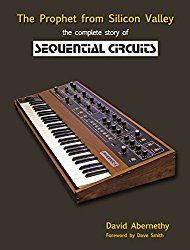
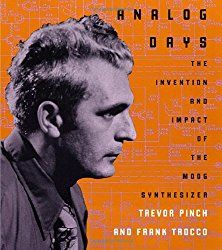
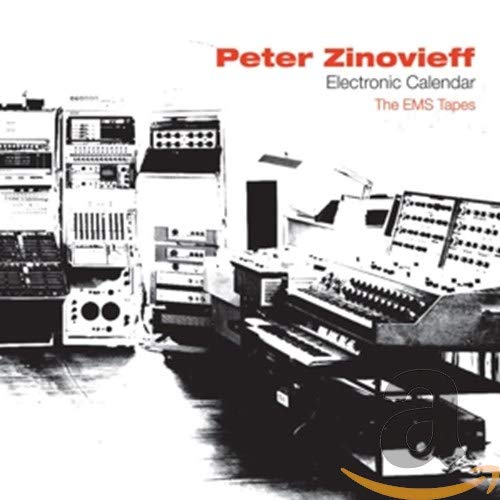
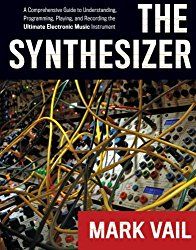
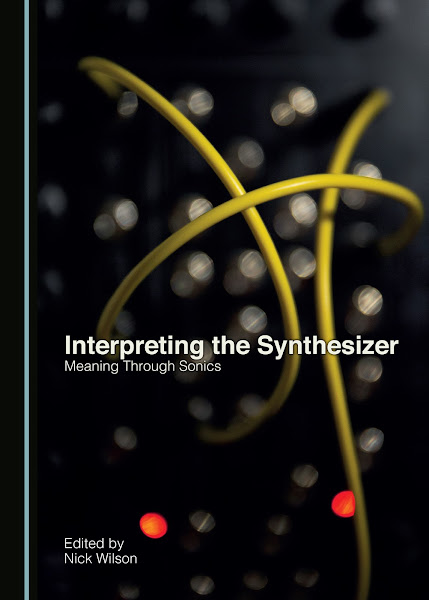
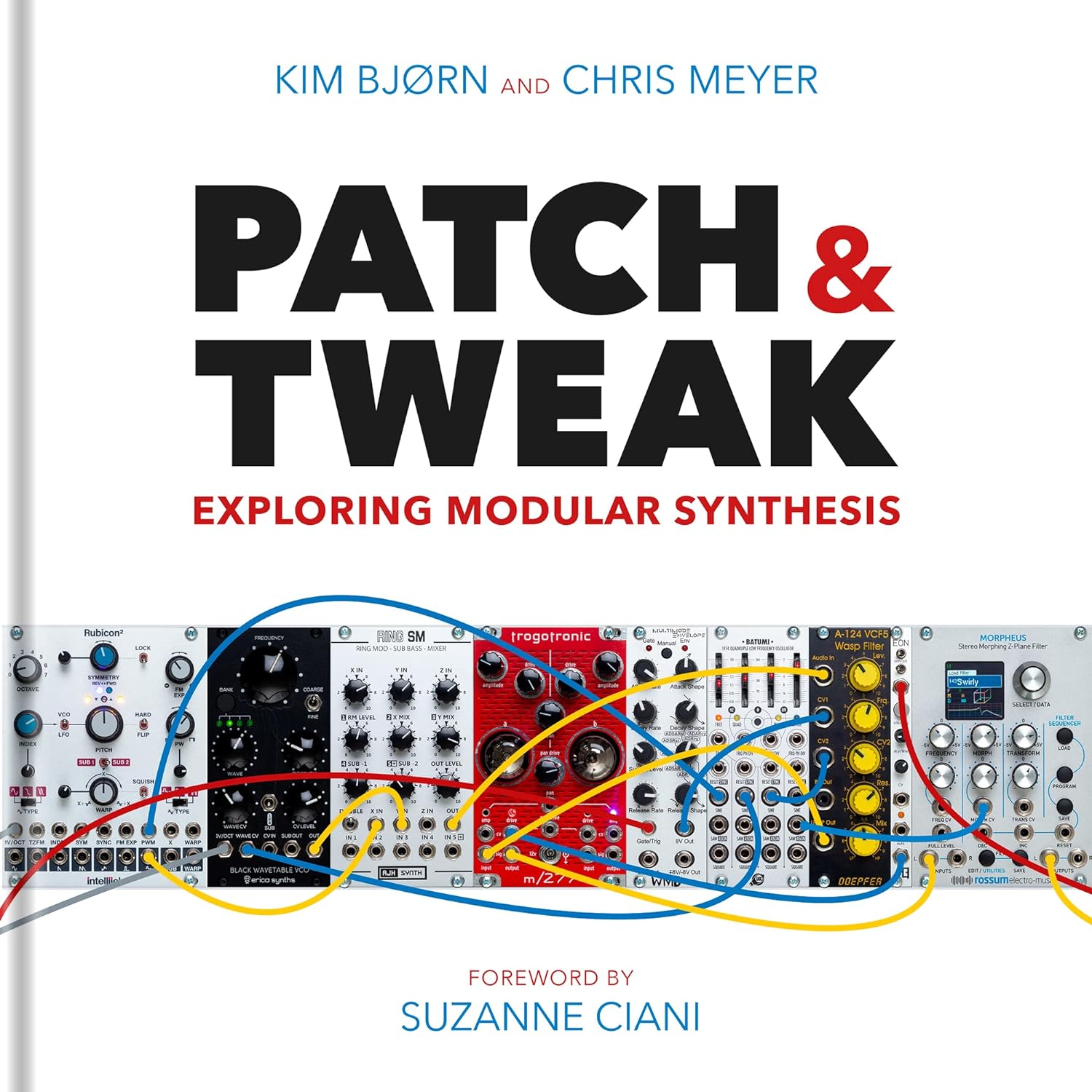
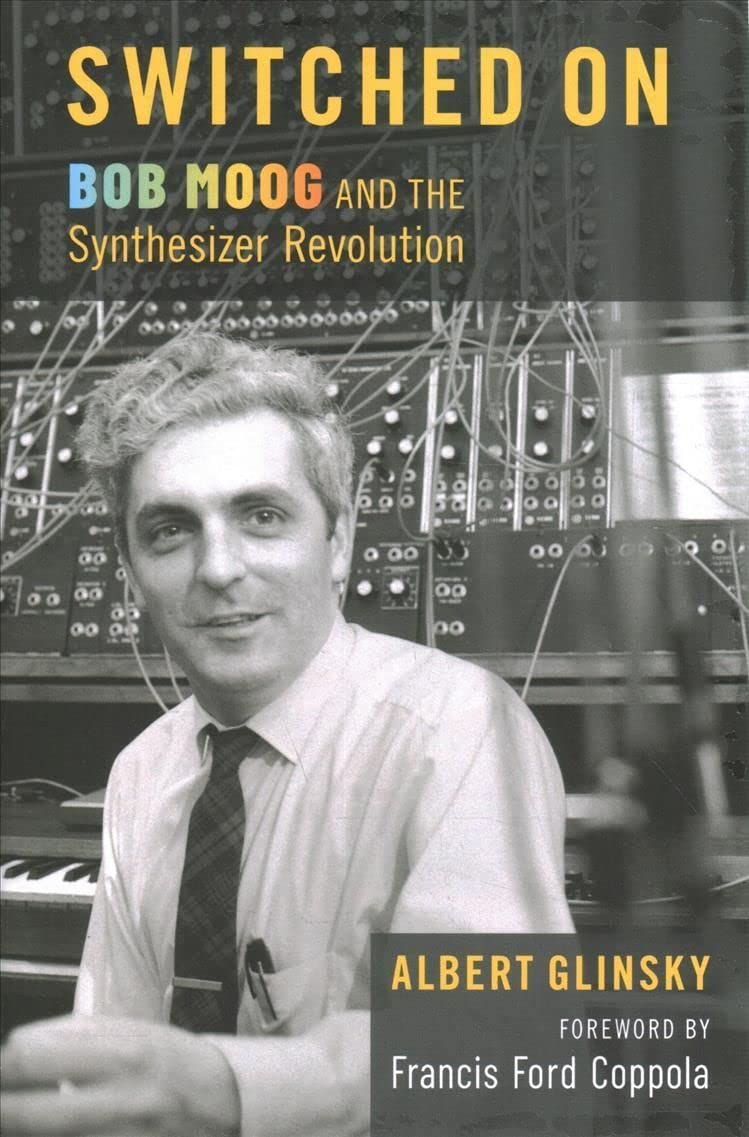
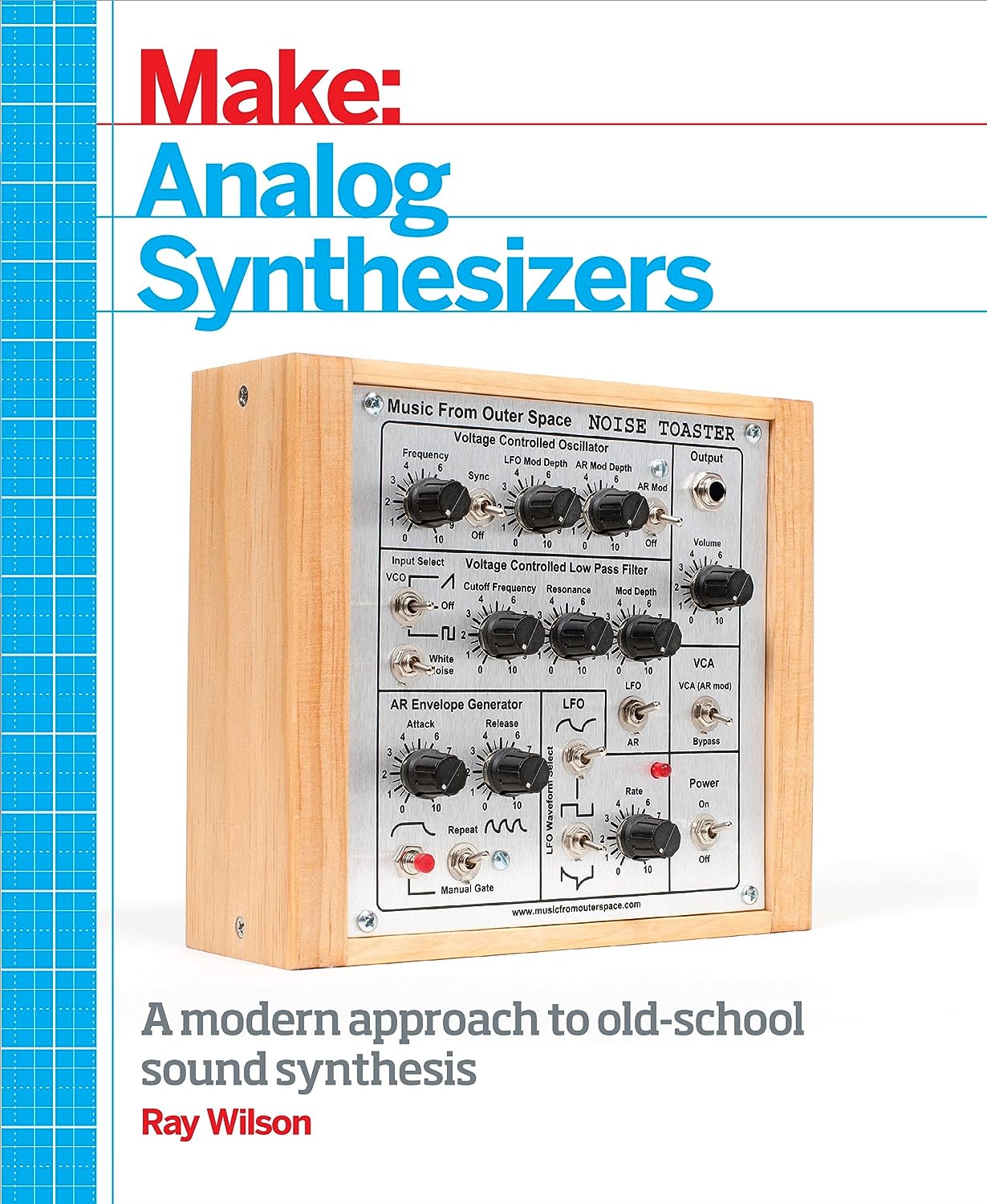
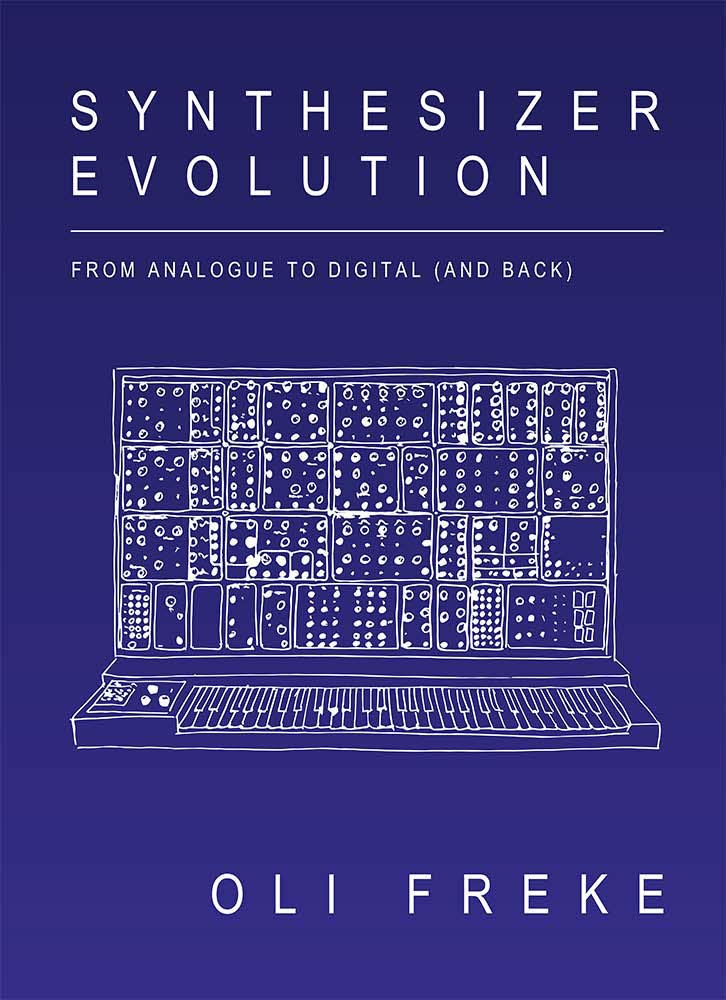
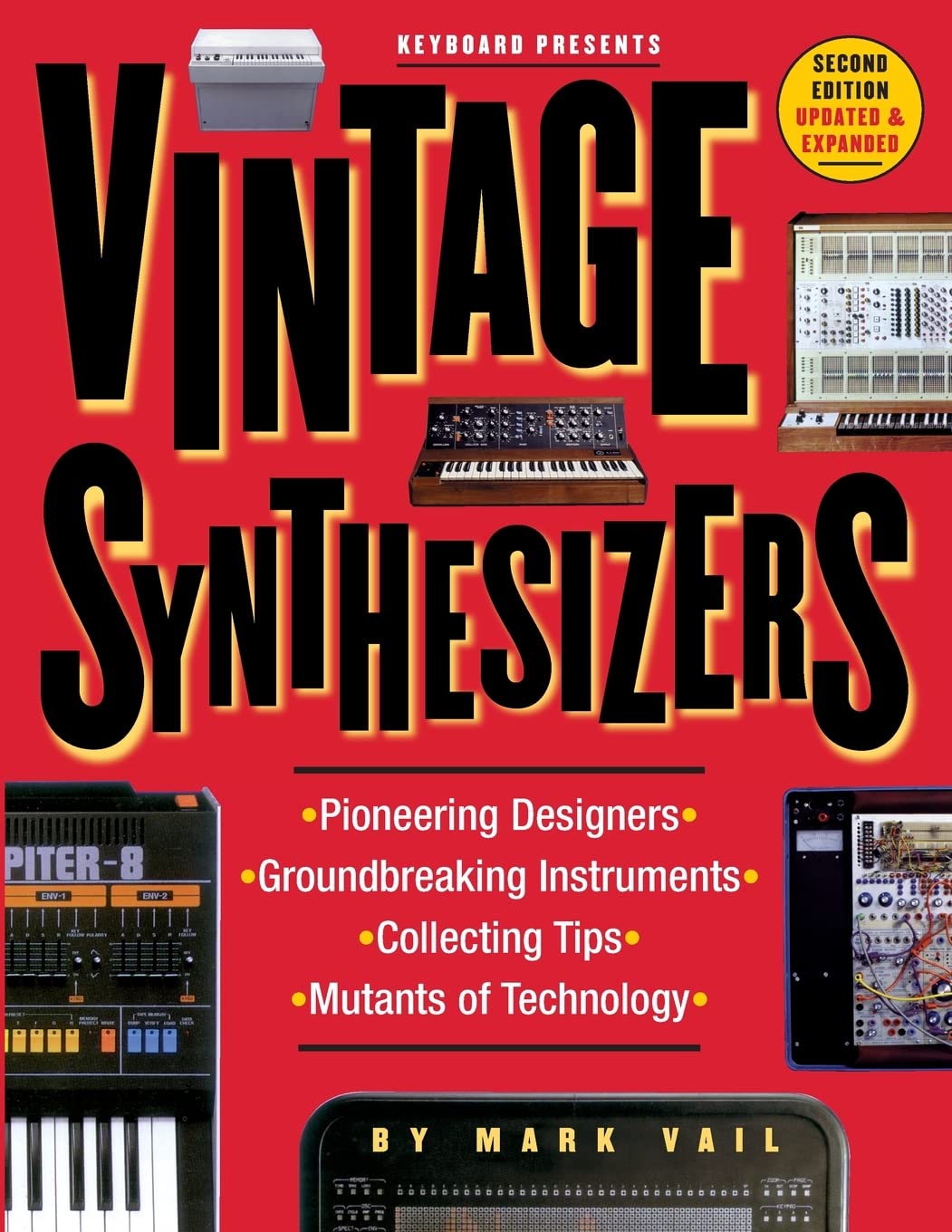
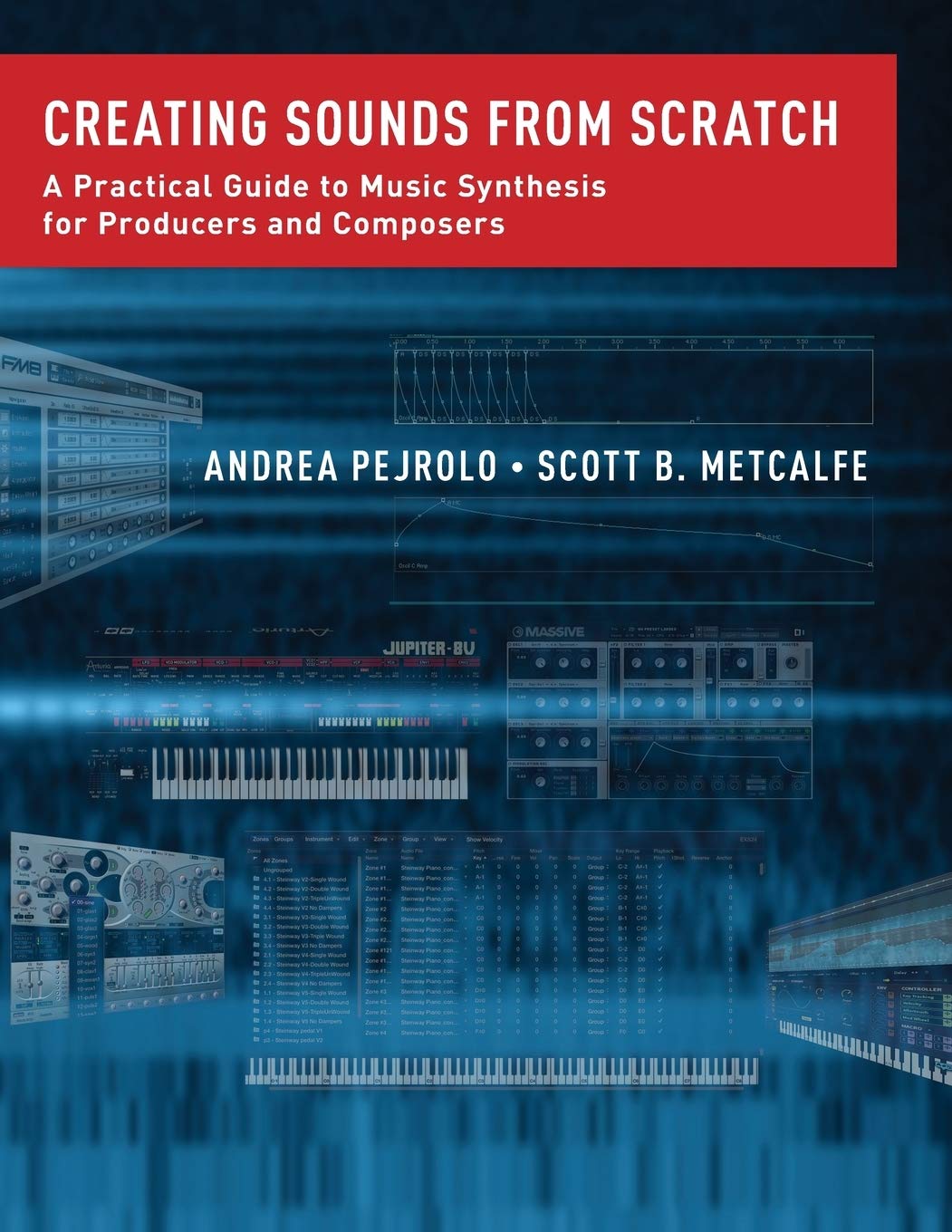
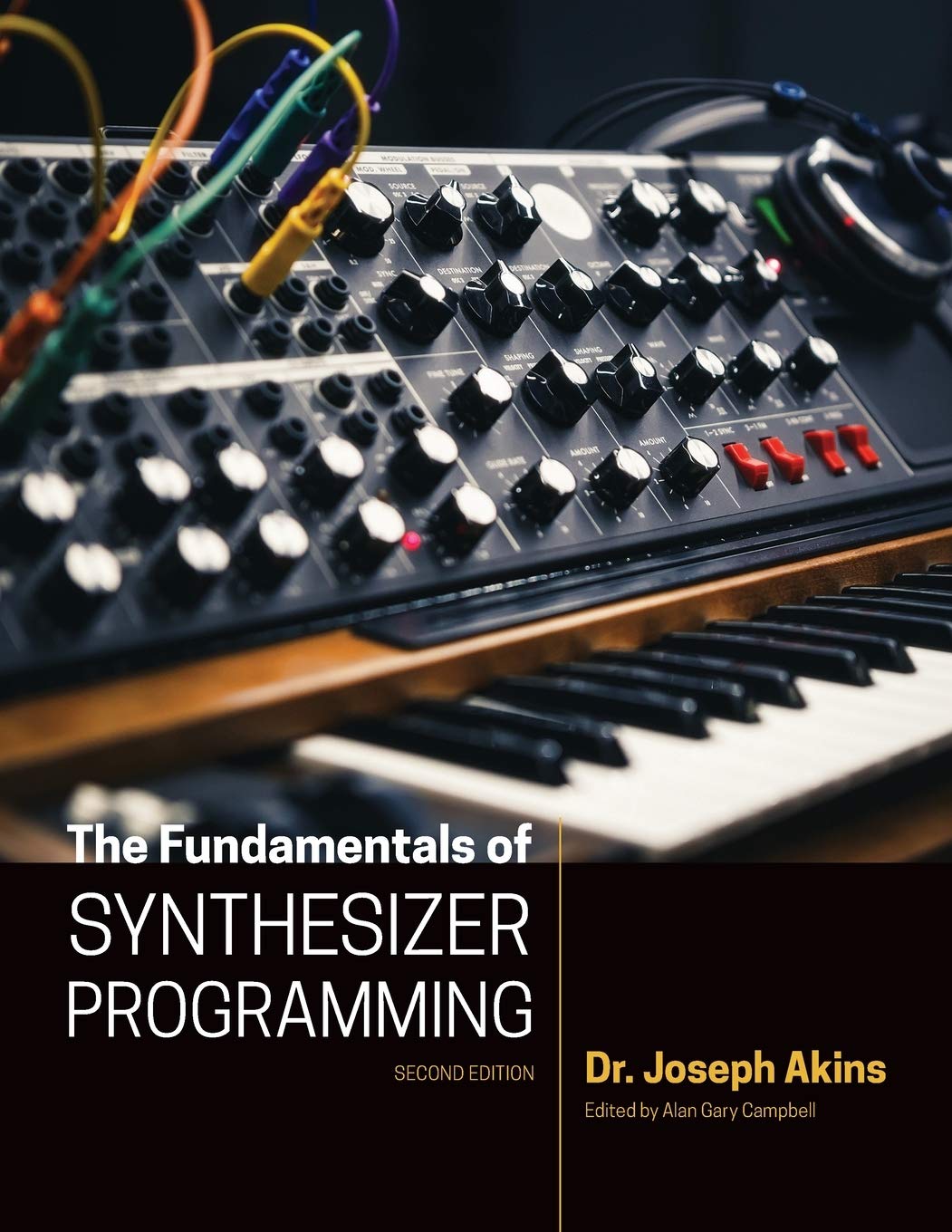
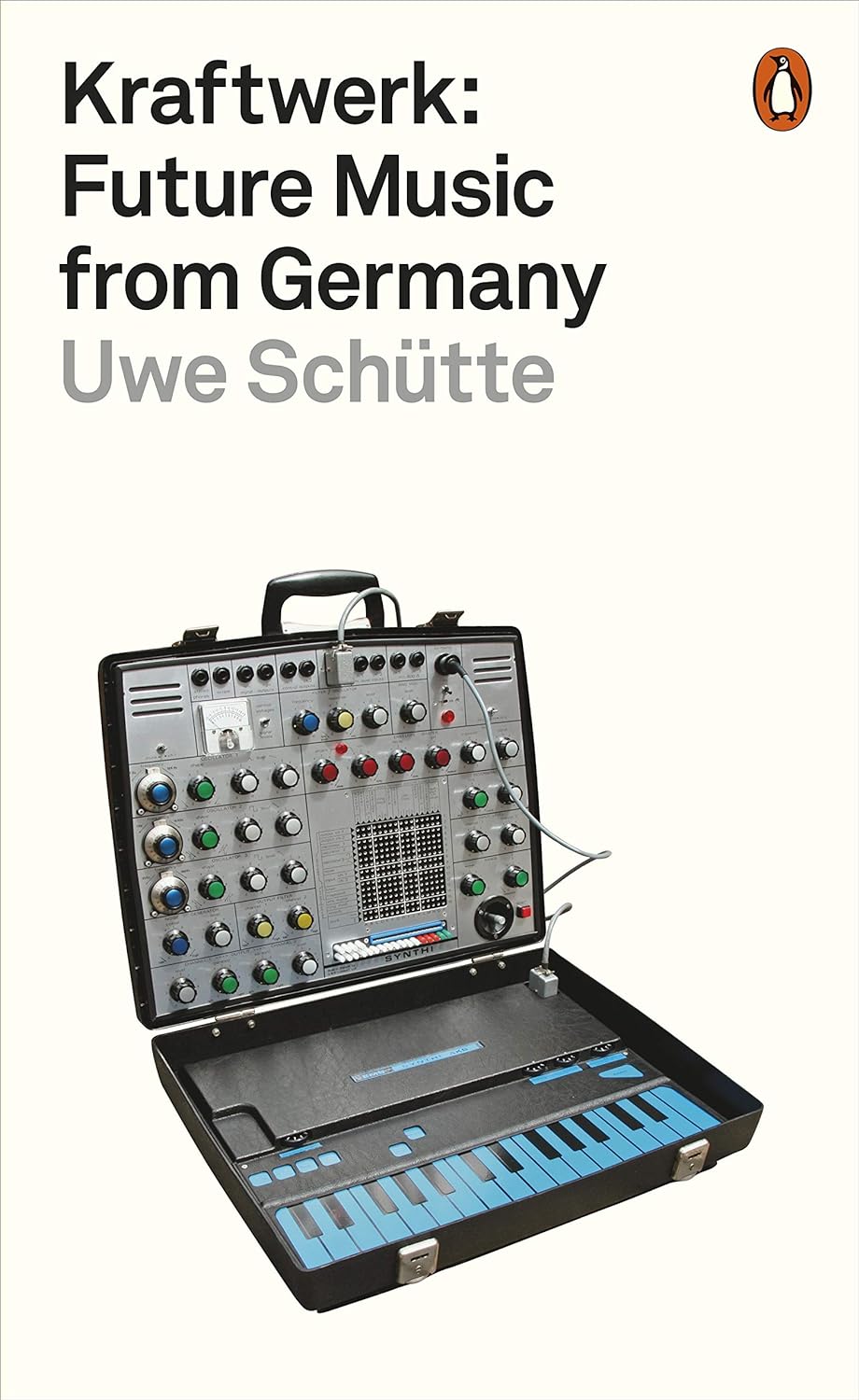
© Matrixsynth - All posts are presented here for informative, historical and educative purposes as applicable within fair use.
MATRIXSYNTH is supported by affiliate links that use cookies to track clickthroughs and sales. See the privacy policy for details.
MATRIXSYNTH - EVERYTHING SYNTH













© Matrixsynth - All posts are presented here for informative, historical and educative purposes as applicable within fair use.
MATRIXSYNTH is supported by affiliate links that use cookies to track clickthroughs and sales. See the privacy policy for details.
MATRIXSYNTH - EVERYTHING SYNTH






y6CBR1yGLPcWQ~~60_58.JPG)

























